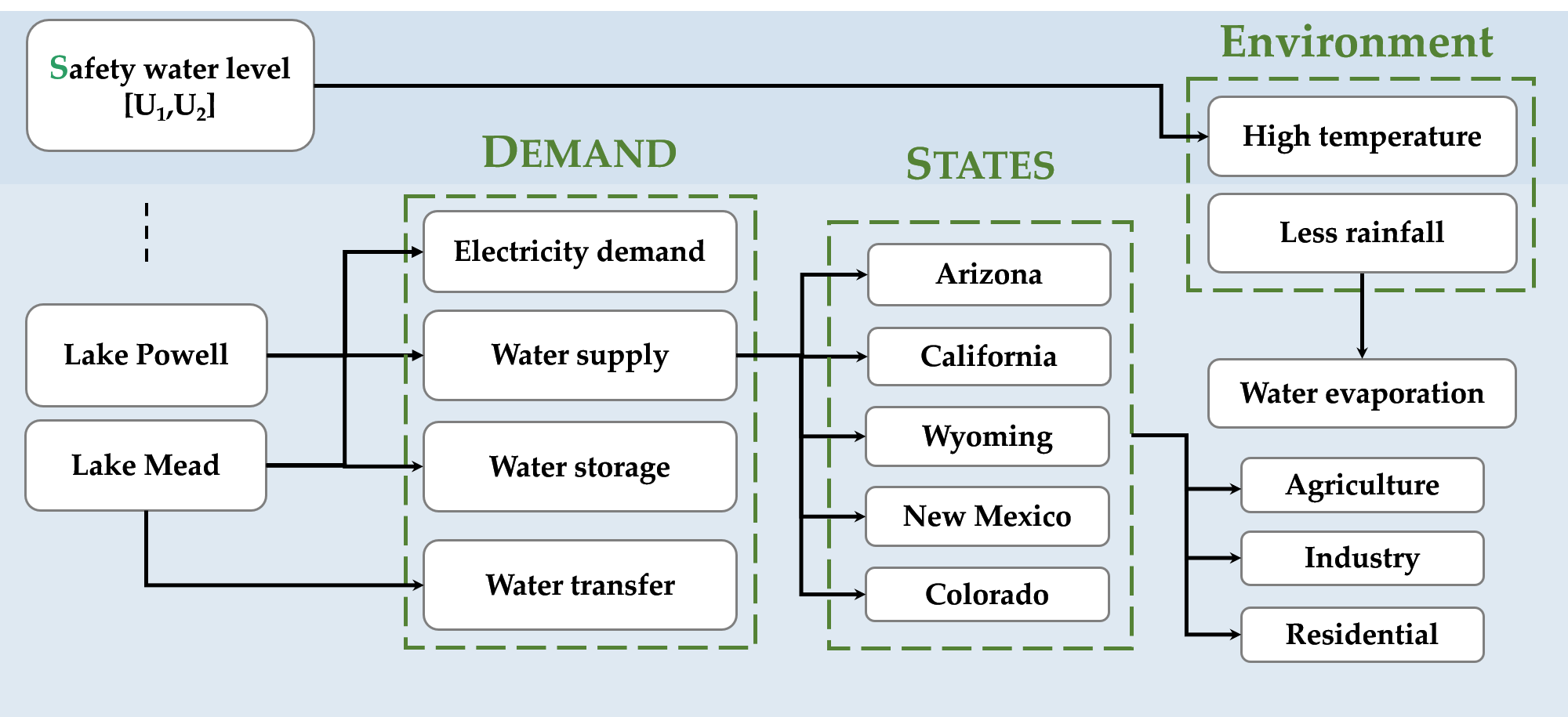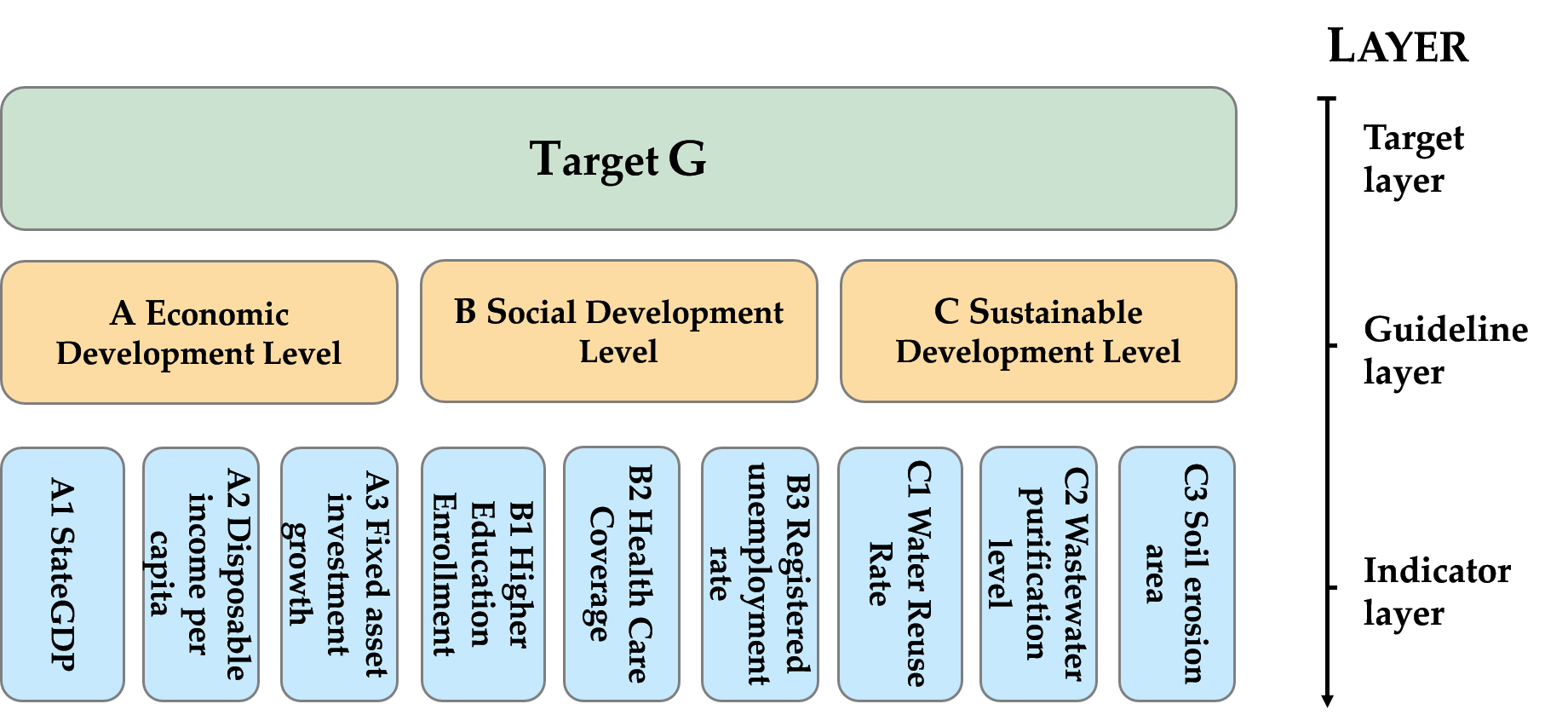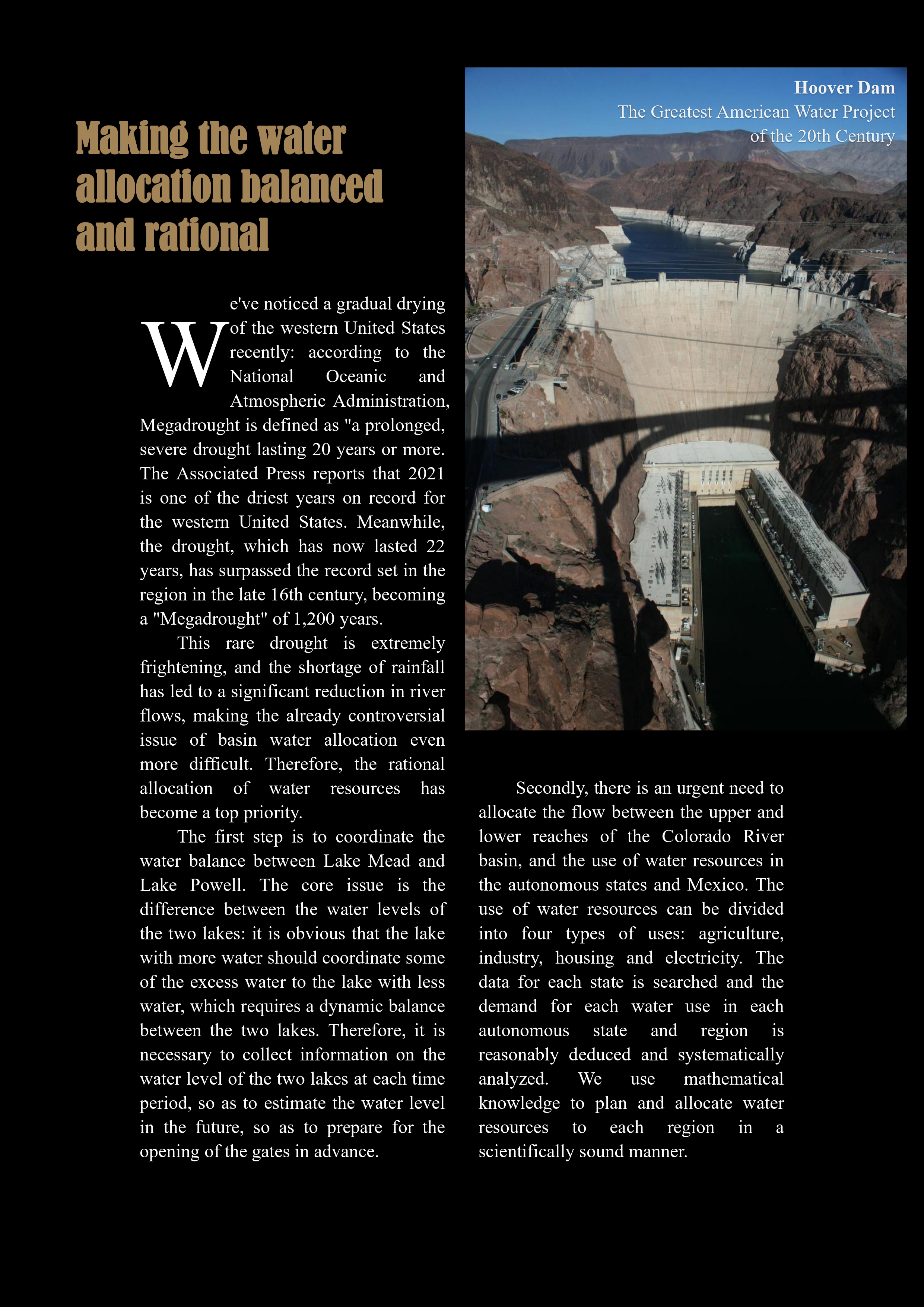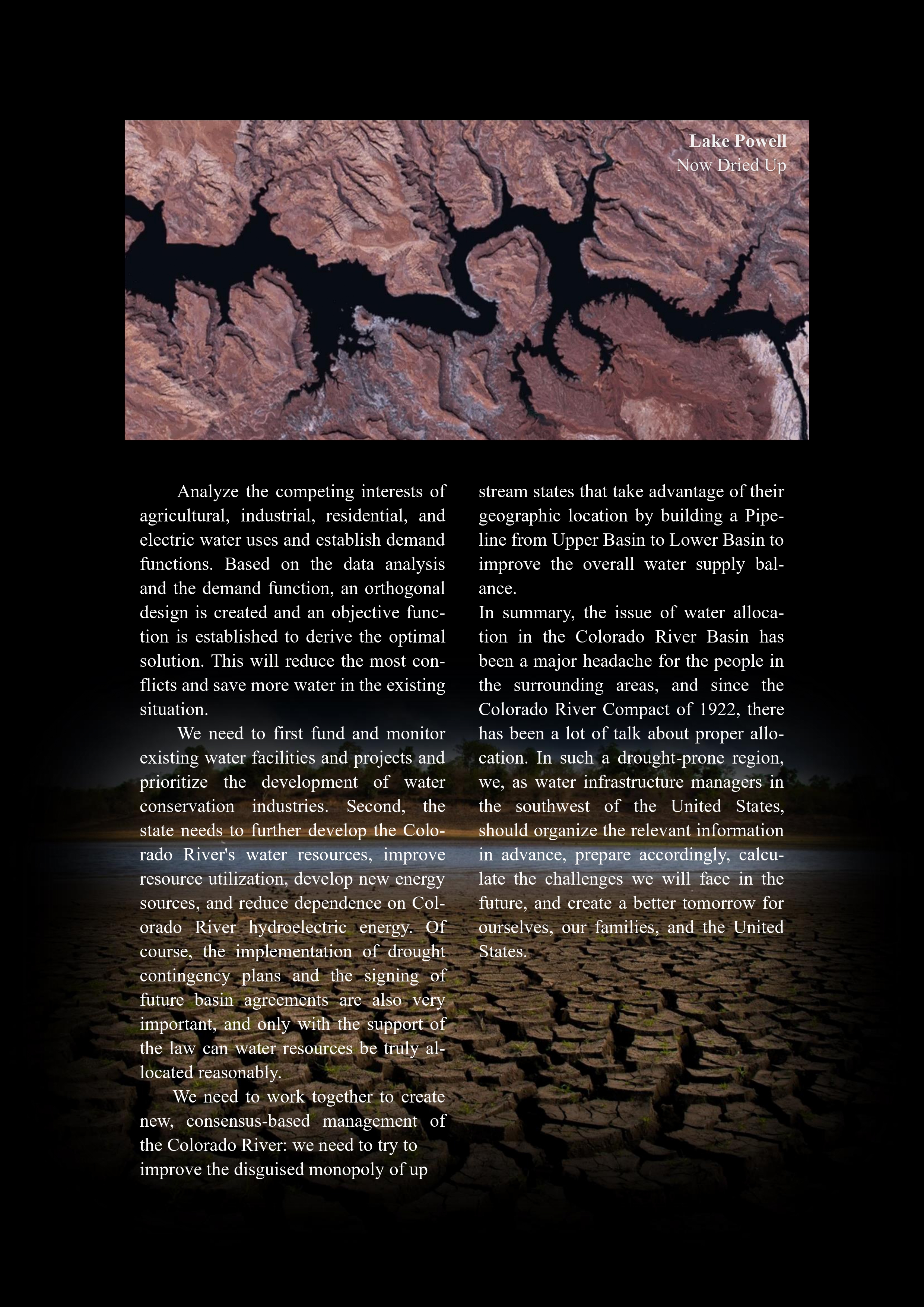Modelling analysis of water allocation based on efficiency maximisation
Abstract
This study delves into the intricate issue of regional water resource coordination and management, employing operational research methodologies and other relevant fields to formulate models for objective planning and ant colony optimization. This research provides pragmatic solutions for the management of the Colorado River basin and offers insightful recommendations for policy-making processes.
We need to develop a mathematical model to solve the problem of optimal resource allocation in the Colorado River Basin and the coordination of the two lakes. The problem is analyzed in four parts:
- Modeling the dynamics of water levels in Lake Powell and Lake Mead and the operation of the two dams.
- Allocation of water resources between the two lakes to address the shortage of resources under agricultural, industrial, residential, and power uses.
- To find solutions when water resources within the basin cannot meet the needs of the self-governing states along the route.
- Prediction of possible scenarios in exceptional cases.
In addressing the first problem, an orthogonal design table, predicated on variations in water levels, was utilized within a single-objective planning model framework. This facilitated the calculation of water allocation results under diverse scenarios, which are meticulously detailed in the “Allocation Results” subsection. It was determined that, when water levels in both Lake Powell and Lake Mead are maintained within safe thresholds, the optimal allocation entails Lake Powell disbursing 14,578.61 units and Lake Mead disbursing 14,329.68 units.
For the second problem, objectives encompassing economic, social, and sustainability considerations were integrated with a multi-objective ant colony optimization algorithm to forge a multi-objective optimization model. This model incorporates realistic constraints to ascertain a Pareto optimal decision, allocating 58.8% of water for general usage and 41.2% for power generation.
The third problem involved deriving supply and demand functions through function fitting. This analysis yielded a functional relationship between water supply and shortage, thereby enabling the visualization of water scarcity scenarios. Such visualizations aid decision-makers in formulating pertinent policy responses to varying degrees of water shortages.
In tackling the fourth question, a multifactorial ANOVA was performed using SPSS to assess the impact of industry changes within various states on water demand, revealing a 7.28% influence on demand attributed to significant industrial alterations in the region.
In conclusion, this paper offers a thorough analysis of water resource governance and the associated allocation of benefits, tailored to the specific scenarios posed by each question. It presents solutions for water resource allocation under various conditions and, following a sensitivity analysis confirming minimal model volatility, establishes the practical significance and reliability of the proposed model. The findings of this research are intended for publication in the “Drought and Thirst” journal, contributing theoretical insights aimed at enhancing the optimization of hydraulic infrastructure.
Keywords: Orthogonal Design, Objective Planning, Ant Colony Optimization, Water Allocation, Visual Analysis
Diagrams and charts





Supervisor and proposition source
Consortium for Mathematics and its Applications, USA
